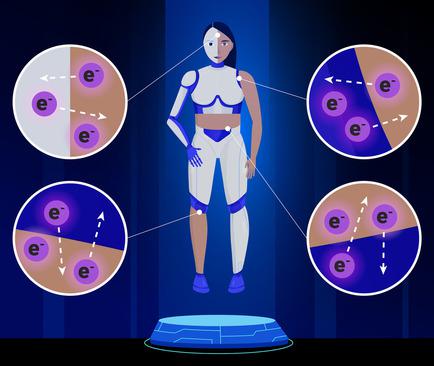当前位置:
X-MOL 学术
›
Isr. J. Chem.
›
论文详情
Our official English website, www.x-mol.net, welcomes your
feedback! (Note: you will need to create a separate account there.)
Bioelectrochemistry and the Singularity Point “I Robot”?**
Israel Journal of Chemistry ( IF 2.3 ) Pub Date : 2021-02-03 , DOI: 10.1002/ijch.202000113 Lital Alfonta 1
Israel Journal of Chemistry ( IF 2.3 ) Pub Date : 2021-02-03 , DOI: 10.1002/ijch.202000113 Lital Alfonta 1
Affiliation

|
In his book “The Singularity Is Near: When Humans Transcend Biology” Ray Kurtzweil described the concept of artificial intelligence in an unorthodox way. It describes how humans will interface with machines and eventually will become one with machines. Hence, we can define a time point, which is a theoretical point when humans and machines will become one. In order to reach this point, a successful interface between the biological/organic to the inorganic matter is needed. In order for these pieces of “machinery” to communicate between one another, an exchange of matter and energy should be achieved. Electron transfer between the inorganic and organic has been the mission of bioelectrochemical systems in the past few decades. Enzymes, antibodies and nucleic acids attachment to electrodes has been achieved more than three decades ago. In the following assay I am reviewing the different advances that were made towards an integration between biological entities to inorganic ones.
中文翻译:

生物电化学和奇异点“我的机器人”吗?**
在他的书“奇异性临近:当人类超越生物学时”雷·库兹韦尔(Ray Kurtzweil)以非正统的方式描述了人工智能的概念。它描述了人类如何与机器交互,并最终与机器合而为一。因此,我们可以定义一个时间点,这是人与机器合二为一的理论点。为了达到这一点,需要生物/有机物与无机物之间成功的界面。为了使这些“机器”之间能够相互通信,应该实现物质和能量的交换。在过去的几十年中,无机物和有机物之间的电子转移一直是生物电化学系统的任务。酶,抗体和核酸与电极的连接已经超过三十年前了。
更新日期:2021-03-08
中文翻译:

生物电化学和奇异点“我的机器人”吗?**
在他的书“奇异性临近:当人类超越生物学时”雷·库兹韦尔(Ray Kurtzweil)以非正统的方式描述了人工智能的概念。它描述了人类如何与机器交互,并最终与机器合而为一。因此,我们可以定义一个时间点,这是人与机器合二为一的理论点。为了达到这一点,需要生物/有机物与无机物之间成功的界面。为了使这些“机器”之间能够相互通信,应该实现物质和能量的交换。在过去的几十年中,无机物和有机物之间的电子转移一直是生物电化学系统的任务。酶,抗体和核酸与电极的连接已经超过三十年前了。









































 京公网安备 11010802027423号
京公网安备 11010802027423号